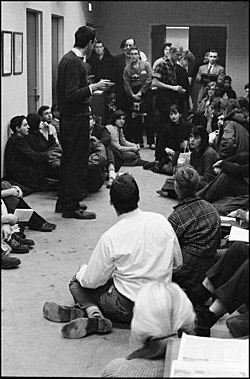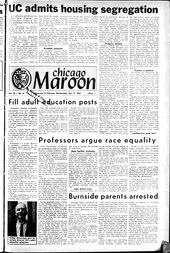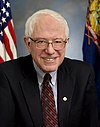
Racial segregation is the separation of people into racial or other ethnic groups in daily life. Segregation can involve the spatial separation of the races, and mandatory use of different institutions, such as schools and hospitals by people of different races. Specifically, it may be applied to activities such as eating in restaurants, drinking from water fountains, using public toilets, attending schools, going to films, riding buses, renting or purchasing homes or renting hotel rooms. In addition, segregation often allows close contact between members of different racial or ethnic groups in hierarchical situations, such as allowing a person of one race to work as a servant for a member of another race. Racial segregation has generally been outlawed worldwide.

The Congress of Racial Equality (CORE) is an African-American civil rights organization in the United States that played a pivotal role for African Americans in the civil rights movement. Founded in 1942, its stated mission is "to bring about equality for all people regardless of race, creed, sex, age, disability, sexual orientation, religion or ethnic background."

A sit-in or sit-down is a form of direct action that involves one or more people occupying an area for a protest, often to promote political, social, or economic change. The protestors gather conspicuously in a space or building, refusing to move unless their demands are met. The often clearly visible demonstrations are intended to spread awareness among the public, or disrupt the goings-on of the protested organisation. Lunch counter sit-ins were a nonviolent form of protest used to oppose segregation during the civil rights movement, and often provoked heckling and violence from those opposed to their message.
Racial equality is when people of all races and ethnicities are treated in an egalitarian/equal manner. Racial equality occurs when institutions give individuals legal, moral, and political rights. In present-day Western society, equality among races continues to become normative. Prior to the early 1960s, attaining equality was difficult for African, Asian, and Indigenous people. However, in more recent years, legislation is being passed ensuring that all individuals receive equal opportunities in treatment, education, employment, and other areas of life. Racial equality can refer to equal opportunities or formal equality based on race or refer to equal representation or equality of outcomes for races, also called substantive equality.

The Greensboro sit-ins were a series of nonviolent protests in February to July 1960, primarily in the Woolworth store—now the International Civil Rights Center and Museum—in Greensboro, North Carolina, which led to the F. W. Woolworth Company department store chain removing its policy of racial segregation in the Southern United States. While not the first sit-in of the civil rights movement, the Greensboro sit-ins were an instrumental action, and also the best-known sit-ins of the civil rights movement. They are considered a catalyst to the subsequent sit-in movement, in which 70,000 people participated. This sit-in was a contributing factor in the formation of the Student Nonviolent Coordinating Committee (SNCC).

The Nashville sit-ins, which lasted from February 13 to May 10, 1960, were part of a protest to end racial segregation at lunch counters in downtown Nashville, Tennessee. The sit-in campaign, coordinated by the Nashville Student Movement and the Nashville Christian Leadership Council, was notable for its early success and its emphasis on disciplined nonviolence. It was part of a broader sit-in movement that spread across the southern United States in the wake of the Greensboro sit-ins in North Carolina.
Racial steering refers to the practice in which real estate brokers guide prospective home buyers towards or away from certain neighborhoods based on their race. The term is used in the context of de facto residential segregation in the United States, and is often divided into two broad classes of conduct:
- Advising customers to purchase homes in particular neighborhoods on the basis of race.
- Failing, on the basis of race, to show, or to inform buyers of homes that meet their specifications.

Facilities and services such as housing, healthcare, education, employment, and transportation have been systematically separated in the United States based on racial categorizations. Segregation was the legally or socially enforced separation of African Americans from whites, as well as the separation of other ethnic minorities from majority and mainstream communities. While mainly referring to the physical separation and provision of separate facilities, it can also refer to other manifestations such as prohibitions against interracial marriage, and the separation of roles within an institution. The U.S. Armed Forces were formally segregated until 1948, as black units were separated from white units but were still typically led by white officers.
The Chicago Freedom Movement, also known as the Chicago open housing movement, was led by Martin Luther King Jr., James Bevel and Al Raby. It was supported by the Chicago-based Coordinating Council of Community Organizations (CCCO) and the Southern Christian Leadership Conference (SCLC). The movement included a large rally, marches, and demands to the City of Chicago. These specific demands covered a wide range of areas besides open housing, and included quality education, transportation and job access, income and employment, health, wealth generation, crime and the criminal justice system, community development, tenants rights, and quality of life. Operation Breadbasket, in part led by Jesse Jackson, sought to harness African-American consumer power. The Chicago Freedom Movement was the most ambitious civil rights campaign in the North of the United States, lasted from mid-1965 to August 1966, and is largely credited with inspiring the 1968 Fair Housing Act.
The African-American middle class consists of African-Americans who have middle-class status within the American class structure. It is a societal level within the African-American community that primarily began to develop in the early 1960s, when the ongoing Civil Rights Movement led to the outlawing of de jure racial segregation. The African American middle class exists throughout the United States, particularly in the Northeast and in the South, with the largest contiguous majority black middle-class neighborhoods being in the Washington, DC suburbs in Maryland. The African American middle class is also prevalent in the Atlanta, Charlotte, Houston, Dallas, Los Angeles, New Orleans, New York, San Antonio and Chicago areas.

Lockefield Gardens was the first public housing built in Indianapolis. Constructed during the years 1935 to 1938, it was built exclusively for low income African-Americans in Indianapolis. The complex was closed in 1976, and a number of structures were demolished in the early 1980s. The only original structures remaining are those along Blake Street.
Residential segregation is the physical separation of two or more groups into different neighborhoods—a form of segregation that "sorts population groups into various neighborhood contexts and shapes the living environment at the neighborhood level". While it has traditionally been associated with racial segregation, it generally refers to the separation of populations based on some criteria.
In the United States, housing segregation is the practice of denying African Americans and other minority groups equal access to housing through the process of misinformation, denial of realty and financing services, and racial steering. Housing policy in the United States has influenced housing segregation trends throughout history. Key legislation include the National Housing Act of 1934, the G.I. Bill, and the Fair Housing Act. Factors such as socioeconomic status, spatial assimilation, and immigration contribute to perpetuating housing segregation. The effects of housing segregation include relocation, unequal living standards, and poverty. However, there have been initiatives to combat housing segregation, such as the Section 8 housing program.

Housing at the University of Chicago includes seven residence halls that are divided into 48 houses. Each house has an average of 70 students. Freshmen and sophomores must live on-campus. Limited on-campus housing is available to juniors and seniors. The university operates 28 apartment buildings near campus for graduate students.
Housing discrimination in the United States refers to the historical and current barriers, policies, and biases that prevent equitable access to housing. Housing discrimination became more pronounced after the abolition of slavery in 1865, typically as part of Jim Crow laws that enforced racial segregation. The federal government didn't begin to take action against these laws until 1917, when the Supreme Court struck down ordinances prohibiting blacks from occupying or owning buildings in majority-white neighborhoods in Buchanan v. Warley. However, the federal government as well as local governments continued to be directly responsible for housing discrimination through redlining and race-restricted covenants until the Civil Rights Act of 1968.

School segregation in the United States was the segregation of students based on their ethnicity. While not prohibited from having schools, various minorities were barred from most schools, schools for whites. Segregation was enforced by formal legal systems in U.S. states primarily in the Southern United States, although elsewhere segregation could be informal or customary. Segregation laws were dismantled in 1954 by the U.S. Supreme Court because of the successes being attained during the Civil Rights Movement. Segregation continued longstanding exclusionary policies in much of the Southern United States after the Civil War. School integration in the United States took place at different times in different areas and often met resistance. Jim Crow laws codified segregation. These laws were influenced by the history of slavery and discrimination in the US. Secondary schools for African Americans in the South were called training schools instead of high schools in order to appease racist whites and focused on vocational education. After the ruling of Brown v. Board of Education, which banned segregated school laws, school segregation took de facto form. School segregation declined rapidly during the late 1960s and early 1970s as the government became strict on schools' plans to combat segregation more effectively as a result of Green v. County School Board of New Kent County. Voluntary segregation by income appears to have increased since 1990. Racial segregation has either increased or stayed constant since 1990, depending on which definition of segregation is used. In general, definitions based on the amount of interaction between black and white students show increased racial segregation, while definitions based on the proportion of black and white students in different schools show racial segregation remaining approximately constant.
This is a timeline of the civil rights movement in the United States, a nonviolent mid-20th century freedom movement to gain legal equality and the enforcement of constitutional rights for people of color. The goals of the movement included securing equal protection under the law, ending legally institutionalized racial discrimination, and gaining equal access to public facilities, education reform, fair housing, and the ability to vote.
Joseph Charles Jones was an American civil rights leader, attorney, co-founder of the Student Nonviolent Coordinating Committee (SNCC), and chairperson of the SNCC's direct action committee.
The Chester school protests were a series of demonstrations that occurred from November 1963 through April 1964 in Chester, Pennsylvania. The demonstrations aimed to end the de facto segregation of Chester public schools that persisted after the 1954 Supreme Court case Brown v. The Board of Education of Topeka. The racial unrest and civil rights protests were led by Stanley Branche of the Committee for Freedom Now (CFFN) and George Raymond of the National Association for the Advancement of Colored Persons (NAACP).
The New Year's Day March in Greenville, South Carolina was a 1,000-man march that protested the segregated facilities at the Greenville Municipal Airport, now renamed the Greenville Downtown Airport. The march occurred after Richard Henry and Jackie Robinson were prohibited from using a white-only waiting room at the airport. The march was the first large-scale movement of the civil rights movement in South Carolina and Greenville. The march brought state-wide attention to segregation, and the case Henry v. Greenville Airport Commission (1961) ultimately required the airport's integration of its facilities.












